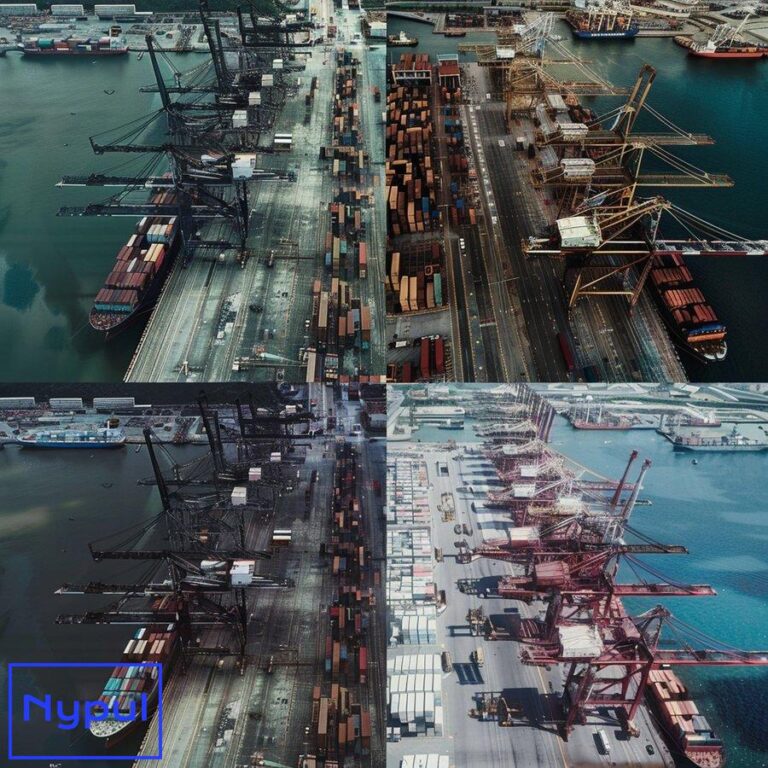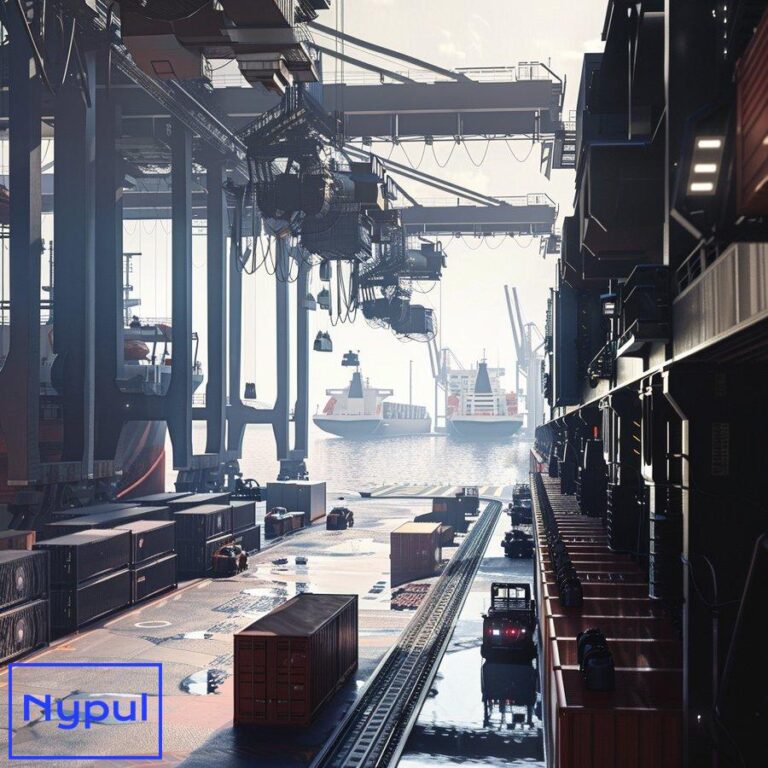What Is Peak Shipping
What is peak shipping and when does it occur?
Peak shipping refers to the busiest period in the logistics and transportation industry when demand for shipping services reaches its highest levels. This phenomenon typically occurs during specific times of the year, driven by various factors such as seasonal consumer behavior, holiday shopping, and industry-specific cycles.
The peak shipping season generally spans from late summer through early winter, with the most intense activity occurring between August and December. However, the exact timing can vary depending on the industry and geographic location.

Key periods within the peak shipping season include:
Back-to-School Season (August-September)
As students prepare to return to school, there’s a surge in demand for school supplies, clothing, and electronics. Retailers stock up on inventory, leading to increased shipping activity.
Holiday Shopping Season (October-December)
The holiday shopping season, encompassing major events like Black Friday, Cyber Monday, and Christmas, drives a significant portion of annual retail sales. Businesses ramp up their inventory to meet consumer demand, resulting in a massive increase in shipping volumes.
Chinese New Year (January-February)
While not part of the traditional peak season, the weeks leading up to Chinese New Year see a surge in shipments from Asia as manufacturers rush to complete orders before the holiday shutdown.
To illustrate the fluctuations in shipping demand throughout the year, consider the following table showing average monthly container throughput at major U.S. ports:
| Month | Container Throughput (TEUs) | % Change from Average |
|---|---|---|
| January | 1,500,000 | -10% |
| February | 1,400,000 | -16% |
| March | 1,600,000 | -4% |
| April | 1,650,000 | -1% |
| May | 1,700,000 | +2% |
| June | 1,750,000 | +5% |
| July | 1,800,000 | +8% |
| August | 1,900,000 | +14% |
| September | 2,000,000 | +20% |
| October | 2,100,000 | +26% |
| November | 2,050,000 | +23% |
| December | 1,950,000 | +17% |
Note: TEU stands for Twenty-Foot Equivalent Unit, a standard measure of container capacity.
This table clearly demonstrates the surge in shipping activity during the peak months of August through December, with October typically experiencing the highest volume.
Understanding the timing and patterns of peak shipping is crucial for businesses, logistics providers, and carriers to prepare adequately for the increased demand and potential challenges that arise during these periods. By recognizing when peak shipping occurs, stakeholders can implement strategies to optimize their operations, manage capacity, and meet customer expectations during the busiest times of the year.
Why does peak shipping happen?
Peak shipping occurs due to a convergence of factors that drive increased demand for goods and, consequently, shipping services. These factors are rooted in consumer behavior, economic patterns, and industry-specific cycles. Understanding the reasons behind peak shipping is crucial for businesses and logistics providers to anticipate and prepare for the surge in demand.
Consumer Demand Cycles
Consumer purchasing patterns play a significant role in driving peak shipping. Certain times of the year see a spike in consumer spending, leading to increased demand for products and, by extension, shipping services.
Holiday Shopping
The holiday season, particularly from November to December, accounts for a substantial portion of annual retail sales. Consumers purchase gifts, decorations, and seasonal items, causing retailers to stock up on inventory and increase their shipping requirements.
Back-to-School Season
As students prepare for the new academic year, there’s a surge in demand for school supplies, clothing, and electronics. This period, typically in August and September, contributes to increased shipping activity.
Seasonal Product Launches
Many industries release new product lines or update existing ones on a seasonal basis. For example, fashion retailers introduce new collections for spring/summer and fall/winter, leading to increased shipping of new inventory.
Economic Factors
Economic conditions and patterns also contribute to the occurrence of peak shipping.
Fiscal Year-End
Many businesses operate on a fiscal year that ends in December. This can lead to increased shipping activity as companies rush to fulfill orders and meet annual sales targets.
Tax Incentives
In some regions, tax incentives or rebates offered at specific times of the year can stimulate consumer spending and business investments, leading to increased shipping demand.
Industry-Specific Cycles
Different industries experience peak periods at various times, contributing to overall shipping demand.
Agricultural Harvests
The harvest season for various crops can lead to increased shipping activity in the agricultural sector.
Manufacturing Cycles
Some industries have specific production cycles that align with peak shipping periods. For instance, electronics manufacturers often ramp up production in preparation for holiday season releases.
Global Trade Patterns
International trade dynamics also influence peak shipping periods.
Chinese New Year
The weeks leading up to Chinese New Year see a surge in shipments from Asia as manufacturers rush to complete orders before the holiday shutdown.
Trade Shows and Exhibitions
Major international trade shows and exhibitions can drive increased shipping activity as businesses transport products and materials for display.
To illustrate the impact of these factors on shipping volumes, consider the following table showing the correlation between key events and shipping demand:
| Event/Factor | Typical Timing | Impact on Shipping Volume |
|---|---|---|
| Holiday Shopping Season | November – December | Very High (+30-40%) |
| Back-to-School Season | August – September | High (+20-25%) |
| Chinese New Year | January – February | Moderate (+15-20%) |
| Summer Vacation Season | June – August | Moderate (+10-15%) |
| Black Friday/Cyber Monday | Late November | Very High (+35-45%) |
| End of Fiscal Year | December | High (+20-30%) |
| New Product Launches | Varies | Moderate to High (+15-25%) |
This table demonstrates how various events and factors contribute to fluctuations in shipping demand throughout the year. The percentages indicate the approximate increase in shipping volume compared to average periods.
Understanding these underlying causes of peak shipping allows businesses to:
Forecast Demand
By analyzing historical data and market trends, companies can better predict shipping needs during peak periods.
Plan Inventory
Retailers and manufacturers can adjust their inventory levels to meet anticipated demand without overstocking.
Optimize Resources
Logistics providers can allocate resources more effectively, ensuring they have sufficient capacity to handle the increased volume during peak times.
Implement Strategies
Businesses can develop and implement strategies to manage costs, improve efficiency, and maintain service quality during high-demand periods.
By recognizing and preparing for the factors that drive peak shipping, businesses and logistics providers can navigate these challenging periods more effectively, ensuring they meet customer demands while maintaining operational efficiency.
How does peak shipping affect supply chains?

Peak shipping periods significantly impact supply chains across various industries, creating both challenges and opportunities for businesses. The effects of peak shipping ripple through every stage of the supply chain, from sourcing and manufacturing to distribution and last-mile delivery. Understanding these impacts is crucial for developing effective strategies to manage the increased demand and maintain operational efficiency.
Increased Demand and Capacity Constraints
During peak shipping seasons, the surge in demand often outpaces available capacity, leading to several consequences:
Transportation Bottlenecks
Carriers and logistics providers may struggle to accommodate the increased volume of shipments, resulting in delays and potential disruptions.
Port Congestion
Major ports experience higher traffic, leading to longer wait times for vessels and potential delays in unloading and processing cargo.
Warehouse Overload
Distribution centers and warehouses may reach capacity limits, causing storage issues and potential delays in order fulfillment.
Labor Shortages
The increased workload during peak seasons can strain the available workforce, potentially leading to staffing shortages across the supply chain.
Cost Implications
Peak shipping periods often come with increased costs for businesses:
Higher Shipping Rates
Carriers typically implement peak season surcharges and higher base rates to manage demand and compensate for increased operational costs.
Overtime Labor Costs
To handle the increased volume, many businesses need to extend working hours or hire temporary staff, leading to higher labor costs.
Inventory Carrying Costs
Companies may need to stock up on inventory earlier to ensure product availability, resulting in increased storage and carrying costs.
Inventory Management Challenges
Peak shipping seasons can complicate inventory management:
Stockouts and Overstocking
Accurately forecasting demand becomes more challenging, potentially leading to stockouts of popular items or overstocking of less popular ones.
Increased Safety Stock
To mitigate the risk of stockouts, businesses may need to maintain higher levels of safety stock, tying up capital and storage space.
Quality Control Pressures
The rush to meet demand can sometimes lead to compromises in quality control processes, potentially resulting in higher rates of defects or returns.
Lead Time Variability
Peak shipping periods often lead to increased variability in lead times:
Extended Transit Times
Congestion and capacity constraints can result in longer transit times for shipments.
Order Processing Delays
The high volume of orders can overwhelm systems and staff, leading to delays in order processing and fulfillment.
Customer Service Challenges
The pressures of peak shipping can impact customer service:
Increased Customer Inquiries
Businesses often experience a surge in customer inquiries about order status and delivery times.
Potential for Dissatisfaction
Delays or errors in shipping can lead to customer dissatisfaction and potential damage to brand reputation.
To illustrate the impact of peak shipping on various aspects of the supply chain, consider the following table:
| Supply Chain Aspect | Impact During Peak Shipping | Potential Consequences |
|---|---|---|
| Transportation | 30-50% increase in volume | Delays, higher costs |
| Warehousing | 80-90% capacity utilization | Storage constraints |
| Labor | 20-30% increase in demand | Overtime, temp hiring |
| Inventory Levels | 40-60% increase | Higher carrying costs |
| Order Processing | 50-70% increase in volume | Longer processing times |
| Customer Service | 100-150% increase in inquiries | Longer response times |
This table provides a snapshot of how peak shipping affects different aspects of the supply chain, highlighting the significant increases in demand and utilization across various operations.
Strategies for Managing Peak Shipping Impacts
To mitigate the challenges posed by peak shipping, businesses can implement several strategies:
Demand Forecasting
Utilize advanced analytics and historical data to improve demand forecasting accuracy.
Capacity Planning
Work closely with carriers and logistics partners to secure necessary capacity well in advance of peak periods.
Inventory Optimization
Implement just-in-time inventory practices where possible, and use data analytics to optimize stock levels.
Diversification of Suppliers and Carriers
Reduce reliance on single sources by diversifying supplier and carrier networks.
Technology Integration
Invest in supply chain management technologies to improve visibility, tracking, and coordination across the supply chain.
Flexible Staffing Models
Develop strategies for flexible staffing, including cross-training employees and establishing relationships with temporary staffing agencies.
Customer Communication
Proactively communicate with customers about potential delays and set realistic expectations for delivery times during peak periods.
By understanding and preparing for the impacts of peak shipping on supply chains, businesses can develop robust strategies to navigate these challenging periods more effectively. This preparation not only helps in managing costs and maintaining operational efficiency but also in ensuring customer satisfaction during the busiest times of the year.
What are the key characteristics of peak shipping?
Peak shipping is characterized by several distinct features that set it apart from regular shipping periods. These characteristics present unique challenges and opportunities for businesses involved in logistics and supply chain management. Understanding these key attributes is essential for developing effective strategies to navigate the peak shipping season successfully.
Surge in Shipping Volume
The most prominent characteristic of peak shipping is the significant increase in shipping volume:
Quantitative Increase
Shipping volumes can surge by 30-50% or more compared to average periods.
Concentrated Demand
This increase is often concentrated within a relatively short timeframe, typically 3-4 months.
Capacity Constraints
The surge in demand often leads to capacity issues across various modes of transportation:
Limited Availability
Shippers may struggle to secure space on vessels, trucks, or planes due to high demand.
Equipment Shortages
There may be shortages of containers, chassis, and other essential equipment.
Higher Freight Rates
Peak shipping periods are typically accompanied by increased costs:
Peak Season Surcharges
Carriers often implement additional fees to manage demand and cover increased operational costs.
Dynamic Pricing
Rates may fluctuate more frequently based on real-time supply and demand.
Extended Lead Times
The high volume of shipments can result in longer processing and transit times:
Port Congestion
Major ports may experience backlogs, leading to delays in unloading and processing cargo.
Processing Delays
High volumes can overwhelm order processing systems and staff, extending lead times.
Increased Variability
Peak shipping introduces greater unpredictability into the supply chain:
Fluctuating Transit Times
Shipments may experience more variable transit times due to congestion and capacity issues.
Demand Volatility
Consumer demand can be more volatile and harder to predict accurately during peak periods.
Heightened Competition for Resources
Businesses compete more intensely for limited resources during peak shipping:
Carrier Capacity
Securing space with preferred carriers becomes more challenging.
Warehouse Space
Storage facilities may reach capacity, leading to competition for available space.
Labor Resources
There’s increased competition for skilled logistics and warehouse workers.
Increased Focus on Planning and Forecasting
Peak shipping necessitates more rigorous planning:
Advanced Booking
Shippers need to book transportation further in advance to secure capacity.
Demand Forecasting
Accurate forecasting becomes crucial for inventory management and capacity planning.
Technology Utilization
There’s often increased reliance on technology during peak shipping:
Visibility Tools
Real-time tracking and visibility become more critical for managing shipments.
Analytics
Advanced analytics are employed for demand forecasting and capacity planning.
Customer Service Challenges
Peak shipping can strain customer service resources:
Higher Inquiry Volume
Businesses typically see a surge in customer inquiries about order status and delivery times.
Managing Expectations
There’s a greater need to manage customer expectations regarding delivery times and potential delays.
To illustrate these characteristics quantitatively, consider the following table comparing key metrics during peak shipping to non-peak periods:
| Characteristic | Non-Peak Period | Peak Shipping Period | % Change |
|---|---|---|---|
| Shipping Volume (TEUs/month) | 1,500,000 | 2,250,000 | +50% |
| Average Freight Rate ($/TEU) | $1,500 | $2,250 | +50% |
| Container Dwell Time (days) | 3-5 | 7-10 | +100% |
| Order Processing Time (hours) | 24 | 48-72 | +100-200% |
| Carrier Capacity Utilization | 70-80% | 95-100% | +25-30% |
| Customer Service Inquiries (per day) | 1,000 | 2,500 | +150% |
| Demand Forecast Accuracy | 85-90% | 70-75% | -15-20% |
This table provides a clear comparison of how various aspects of shipping and logistics are affected during peak periods. The significant increases across multiple metrics underscore the challenges and complexities businesses face during peak shipping seasons.
Implications for Businesses
Understanding these characteristics of peak shipping allows businesses to:
Develop Robust Strategies
Create comprehensive plans to manage increased volumes, costs, and potential disruptions.
Optimize Resource Allocation
Allocate resources more effectively to handle the surge in demand.
Enhance Customer Experience
Implement measures to maintain service quality despite increased pressures.
Improve Forecasting
Invest in advanced forecasting tools and techniques to better predict and manage demand fluctuations.
Build Resilience
Develop more resilient supply chain processes that can adapt to the pressures of peak shipping.
By recognizing and preparing for these key characteristics, businesses can navigate the challenges of peak shipping more effectively, maintaining operational efficiency and customer satisfaction during the busiest times of the year.
How does peak shipping impact different transportation modes?
Peak shipping affects various transportation modes differently, each facing unique challenges and opportunities during these high-demand periods. Understanding these impacts is crucial for businesses to develop comprehensive logistics strategies that account for the strengths and limitations of each mode during peak seasons.
Ocean FreightOcean Freight
Ocean freight experiences significant impacts during peak shipping seasons:
Capacity Constraints
Container ships often operate at full capacity, leading to space shortages and potential rolled bookings.
Port Congestion
Major ports face increased congestion, resulting in longer wait times for vessels and potential delays in unloading and processing cargo.
Equipment Imbalances
High demand can lead to shortages of containers and other equipment in certain regions.
Rate Volatility
Freight rates tend to increase dramatically during peak seasons, with carriers implementing peak season surcharges.
Table: Impact of Peak Shipping on Ocean Freight
| Aspect | Non-Peak Period | Peak Period | % Change |
|---|---|---|---|
| Vessel Utilization | 75-80% | 95-100% | +20-25% |
| Port Dwell Time | 3-5 days | 7-10 days | +100-133% |
| Freight Rates ($/TEU) | $1,500 | $3,000-$4,000 | +100-167% |
| Container Availability | Sufficient | Limited | N/A |
Air Freight
Air freight also faces unique challenges during peak shipping periods:
Capacity Crunch
Available cargo space becomes scarce, especially on popular routes.
Higher Rates
Air freight rates can spike significantly during peak seasons due to increased demand.
Transit Time Variability
While generally faster than ocean freight, air shipments may experience delays due to congestion at airports and increased security measures.
Increased Competition
Shippers compete intensely for limited air cargo space, often leading to prioritization of high-value or time-sensitive goods.
Ground Transportation (Trucking)
Trucking services are crucial for inland transportation and last-mile delivery during peak seasons:
Driver Shortages
The increased demand exacerbates existing driver shortages, potentially leading to delivery delays.
Equipment Utilization
Trucks and trailers are in high demand, leading to potential shortages and increased rates.
Congestion
Road networks, especially near major ports and distribution centers, may experience increased congestion.
Intermodal Transportation
Intermodal transport, which combines multiple modes, faces its own set of challenges:
Coordination Complexity
Managing transfers between different modes becomes more challenging during high-volume periods.
Equipment Imbalances
Shortages of containers, chassis, and other equipment can occur at key transfer points.
Rail Congestion
Rail networks may experience congestion, particularly at major intermodal terminals.
Table: Comparison of Transportation Modes During Peak Shipping
| Mode | Capacity Increase | Rate Increase | Main Challenges |
|---|---|---|---|
| Ocean | 20-25% | 100-167% | Port congestion, equipment shortages |
| Air | 15-20% | 50-100% | Limited space, high competition |
| Trucking | 10-15% | 20-30% | Driver shortages, road congestion |
| Intermodal | 15-20% | 30-50% | Coordination complexity, equipment imbalances |
Strategies for Managing Multi-Modal Transportation During Peak Seasons
To navigate the challenges across different transportation modes during peak shipping, businesses can employ several strategies:
Diversification
Utilize a mix of transportation modes to reduce reliance on any single method and mitigate risks.
Advanced Booking
Secure capacity well in advance, especially for ocean and air freight.
Flexible Routing
Develop alternative routing options to avoid congested ports or airports.
Technology Integration
Implement advanced tracking and visibility solutions to manage shipments across multiple modes effectively.
Carrier Relationships
Cultivate strong relationships with carriers across different modes to ensure better service and potentially preferential treatment during peak times.
Regional Distribution
Consider establishing regional distribution centers to reduce reliance on long-distance transportation during peak periods.
Time-Definite Services
For critical shipments, consider using premium, time-definite services that guarantee delivery within specific timeframes.
Understanding the unique impacts of peak shipping on different transportation modes allows businesses to develop more robust and flexible logistics strategies. By anticipating mode-specific challenges and implementing appropriate mitigation measures, companies can better navigate the complexities of peak shipping seasons, ensuring more reliable and cost-effective movement of goods during these critical periods.
What strategies can businesses use to manage peak shipping?
Managing peak shipping effectively requires a multifaceted approach that addresses the various challenges posed by increased demand and potential disruptions. Businesses can implement several strategies to navigate these busy periods successfully, ensuring smooth operations and customer satisfaction.
Early Planning and Forecasting
Proactive planning is crucial for managing peak shipping effectively:
Demand Forecasting
Utilize advanced analytics and historical data to predict demand patterns accurately. This helps in aligning inventory levels and transportation capacity with expected needs.
Capacity Planning
Work closely with carriers and logistics partners to secure necessary capacity well in advance of peak periods. This may involve negotiating long-term contracts or reserving space months ahead.
Scenario Planning
Develop contingency plans for various potential disruptions, such as port congestion, weather events, or equipment shortages.
Inventory Management
Effective inventory management is key to meeting demand while controlling costs:
Safety Stock Optimization
Maintain adequate safety stock levels to buffer against demand fluctuations and potential supply chain disruptions.
Just-in-Time (JIT) Practices
Where possible, implement JIT inventory practices to reduce carrying costs while ensuring product availability.
Inventory Positioning
Strategically position inventory closer to end consumers to reduce transit times and improve responsiveness.
Diversification of Supply Chain
Reducing reliance on single sources can improve resilience during peak periods:
Multiple Suppliers
Develop relationships with multiple suppliers to mitigate the risk of stockouts or production delays.
Carrier Diversification
Work with a mix of carriers and transportation modes to ensure flexibility and reduce dependence on a single provider.
Geographic Diversification
Consider sourcing from multiple regions to mitigate risks associated with localized disruptions.
Technology Integration
Leveraging technology can significantly improve peak shipping management:
Supply Chain Visibility Tools
Implement real-time tracking and visibility solutions to monitor shipments and quickly address any issues.
Warehouse Management Systems (WMS)
Utilize advanced WMS to optimize storage, picking, and packing processes during high-volume periods.
Transportation Management Systems (TMS)
Employ TMS to optimize routing, carrier selection, and load planning.
Artificial Intelligence and Machine Learning
Leverage AI and ML for more accurate demand forecasting and dynamic inventory management.
Flexible Fulfillment Strategies
Adapting fulfillment processes can help manage increased volumes:
Omnichannel Fulfillment
Utilize store networks for order fulfillment to reduce pressure on central distribution centers.
Drop Shipping
Partner with suppliers for direct-to-consumer shipping to alleviate pressure on internal fulfillment operations.
Fulfillment Outsourcing
Consider outsourcing some fulfillment operations to third-party logistics providers (3PLs) to handle overflow during peak periods.
Customer Communication and Expectation Management
Proactive communication is essential for maintaining customer satisfaction:
Transparent Communication
Clearly communicate potential delays or issues to customers, setting realistic expectations for delivery times.
Order Tracking
Provide customers with easy access to real-time order tracking information.
Proactive Updates
Send proactive updates on order status, especially in cases of delays or changes.
Workforce Management
Effective staffing strategies are crucial for handling increased volumes:
Temporary Staffing
Develop relationships with staffing agencies to quickly scale up workforce during peak periods.
Cross-Training
Cross-train employees to perform multiple roles, increasing operational flexibility.
Shift Management
Implement flexible shift schedules to extend operating hours and distribute workload more evenly.
Pricing and Promotion Strategies
Strategic pricing and promotions can help manage demand:
Dynamic Pricing
Implement dynamic pricing strategies to balance demand across the peak season.
Early Bird Promotions
Offer incentives for early ordering to spread demand over a longer period.
Off-Peak Incentives
Provide discounts or other incentives for customers willing to receive shipments during off-peak times.
Table: Effectiveness of Peak Shipping Management Strategies
| Strategy | Potential Impact | Implementation Complexity | Cost |
|---|---|---|---|
| Early Planning | High | Medium | Low |
| Inventory Optimization | High | High | Medium |
| Supply Chain Diversification | Medium | High | High |
| Technology Integration | High | High | High |
| Flexible Fulfillment | Medium | Medium | Medium |
| Customer Communication | Medium | Low | Low |
| Workforce Management | High | Medium | Medium |
| Pricing Strategies | Medium | Medium | Low |
This table provides a quick overview of the relative effectiveness, complexity, and cost associated with different peak shipping management strategies, helping businesses prioritize their efforts.
Measuring Success and Continuous Improvement
To ensure the effectiveness of these strategies, businesses should:
Define Key Performance Indicators (KPIs)
Establish clear metrics to measure the success of peak shipping management efforts.
Conduct Post-Peak Analysis
After each peak season, conduct a thorough analysis to identify areas for improvement.
Iterate and Refine
Continuously refine strategies based on lessons learned and changing market conditions.
By implementing a combination of these strategies, businesses can better navigate the challenges of peak shipping periods. The key lies in developing a comprehensive approach that addresses all aspects of the supply chain, from demand forecasting and inventory management to customer communication and workforce planning. With careful planning and execution, companies can turn the challenges of peak shipping into opportunities for growth and improved customer satisfaction.
How has peak shipping evolved over time?
The evolution of peak shipping reflects broader changes in global trade, consumer behavior, and technological advancements. Understanding this evolution provides valuable insights into current trends and future directions in the logistics and supply chain industry.

Historical Perspective
Early 20th Century
Peak shipping was primarily driven by agricultural harvests and seasonal manufacturing cycles. The focus was largely on domestic or regional trade.
Post-World War II Era
With the rise of global trade, peak shipping began to align more closely with holiday seasons, particularly in Western countries.
1970s-1980s
The introduction of containerization revolutionized shipping, allowing for more efficient handling of goods and contributing to the growth of global supply chains.
Key Milestones in Peak Shipping Evolution
Globalization of Supply Chains
1990s-2000s
The rapid growth of global trade, particularly with the rise of China as a manufacturing powerhouse, led to more pronounced peak shipping seasons.
Impact
Longer lead times and more complex supply chains necessitated earlier planning for peak seasons.
E-commerce Revolution
Late 1990s-Present
The rise of e-commerce, led by companies like Amazon, dramatically changed consumer shopping habits and shipping patterns.
Impact
Peak shipping periods became more intense, with a greater focus on last-mile delivery and rapid fulfillment.
Just-in-Time Manufacturing
1980s-2000s
The adoption of just-in-time manufacturing principles led to more frequent, smaller shipments throughout the year.
Impact
While this smoothed out some shipping volumes, it also made supply chains more vulnerable to disruptions during peak periods.
Digital Transformation
2000s-Present
The integration of digital technologies in logistics and supply chain management has enabled more precise forecasting and real-time tracking.
Impact
Improved ability to manage peak shipping through data-driven decision making and enhanced visibility.
Shift in Consumer Expectations
2010s-Present
Consumers increasingly expect fast, free shipping, putting additional pressure on retailers and logistics providers during peak periods.
Impact
Greater emphasis on speed and efficiency in shipping, leading to investments in automation and alternative delivery methods.
Table: Evolution of Peak Shipping Characteristics
| Era | Primary Drivers | Key Challenges | Technological Focus |
|---|---|---|---|
| 1950s-1970s | Seasonal manufacturing, holidays | Limited global coordination | Manual processes |
| 1980s-1990s | Growing global trade | Inventory management | Early computerization |
| 2000s-2010s | E-commerce growth | Last-mile delivery | Digital tracking, early AI |
| 2010s-Present | Omnichannel retail, same-day delivery | Speed, sustainability | AI/ML, automation, IoT |
Recent Trends and Current State
Omnichannel Fulfillment
The integration of online and offline retail has led to more complex fulfillment strategies, with stores often serving as mini distribution centers during peak periods.
Sustainability Concerns
Increasing awareness of environmental issues has led to a focus on sustainable shipping practices, even during peak periods.
Automation and Robotics
Warehouses and fulfillment centers are increasingly utilizing automation to handle high volumes during peak seasons more efficiently.
Artificial Intelligence and Machine Learning
Advanced AI and ML algorithms are being employed for more accurate demand forecasting and dynamic routing optimization.
Gig Economy in Last-Mile Delivery
The rise of gig economy platforms has introduced more flexibility in last-mile delivery capacity during peak periods.
Challenges in Modern Peak Shipping
Capacity Constraints
Despite technological advancements, physical infrastructure (ports, airports, roads) still faces significant strain during peak periods.
Labor Shortages
Many regions face persistent shortages of skilled logistics workers, particularly during peak seasons.
Cybersecurity Risks
As supply chains become more digitized, the risk of cyber attacks disrupting peak shipping operations has increased.
Geopolitical Factors
Trade tensions and geopolitical events can significantly impact global supply chains and peak shipping patterns.
Future Outlook
Predictive Analytics
Advanced analytics will play an increasingly crucial role in anticipating and managing peak shipping demands.
Autonomous Vehicles
The development of autonomous trucks and drones may help address capacity and labor challenges in the future.
Blockchain Technology
Blockchain could enhance transparency and efficiency in supply chain operations during peak periods.
Flexible and Resilient Supply Chains
Future supply chains are likely to prioritize flexibility and resilience to better handle peak shipping challenges.
Personalized Delivery Options
Increasing consumer demand for personalized delivery experiences will shape future peak shipping strategies.
The evolution of peak shipping reflects the dynamic nature of global trade and consumer behavior. From its roots in seasonal agricultural and manufacturing cycles to today’s complex, technology-driven operations, peak shipping has continually adapted to changing market conditions and technological advancements. Understanding this evolution is crucial for businesses to anticipate future trends and develop strategies that can effectively manage the challenges of peak shipping in an increasingly complex and interconnected global economy.
What role does technology play in managing peak shipping?

Technology plays a pivotal role in managing the complexities and challenges of peak shipping periods. As the logistics and supply chain industry continues to evolve, technological advancements have become increasingly crucial in optimizing operations, enhancing visibility, and improving decision-making processes. The integration of various technologies helps businesses navigate the intense demands of peak shipping more effectively and efficiently.
Key Technologies in Peak Shipping Management
Artificial Intelligence (AI) and Machine Learning (ML)
AI and ML technologies are transforming how businesses approach peak shipping:
Demand Forecasting
AI algorithms analyze historical data, market trends, and external factors to provide more accurate demand forecasts, enabling better preparation for peak periods.
Dynamic Route Optimization
ML models continuously optimize delivery routes based on real-time traffic data, weather conditions, and order volumes.
Predictive Maintenance
AI-driven predictive maintenance helps prevent equipment breakdowns during critical peak periods.
Internet of Things (IoT)
IoT devices provide real-time data and enhanced visibility throughout the supply chain:
Asset Tracking
IoT sensors on containers, pallets, and vehicles offer real-time location and condition monitoring.
Warehouse Management
IoT-enabled systems optimize warehouse operations, improving inventory accuracy and picking efficiency during high-volume periods.
Temperature Monitoring
For perishable goods, IoT sensors ensure proper conditions are maintained throughout transit.
Blockchain Technology
While still in early stages of adoption, blockchain offers potential benefits for peak shipping management:
Supply Chain Transparency
Blockchain can provide an immutable record of a product’s journey, enhancing traceability and accountability.
Smart Contracts
Automated, self-executing contracts can streamline processes and reduce disputes during busy shipping periods.
Secure Data Sharing
Blockchain enables secure sharing of critical information among supply chain partners.
Advanced Analytics and Big Data
The ability to process and analyze vast amounts of data is crucial for effective peak shipping management:
Pattern Recognition
Big data analytics identify patterns and trends in shipping data, helping to anticipate potential bottlenecks or disruptions.
Performance Optimization
Advanced analytics help optimize various aspects of shipping operations, from carrier selection to warehouse layout.
Risk Assessment
Data-driven risk assessment models help businesses prepare for potential disruptions during peak periods.
Robotics and Automation
Automation technologies are increasingly crucial in handling high volumes during peak shipping:
Warehouse Robotics
Automated guided vehicles (AGVs) and robotic picking systems increase efficiency and accuracy in order fulfillment.
Sortation Systems
Advanced sortation technologies help manage high volumes of packages more efficiently.
Automated Packaging
Robotics systems can optimize packaging processes, reducing waste and improving speed.
Cloud Computing
Cloud-based solutions offer scalability and flexibility crucial for managing peak shipping demands:
Scalable Resources
Cloud infrastructure allows businesses to quickly scale up computing resources to handle increased data processing needs during peak periods.
Collaborative Platforms
Cloud-based platforms facilitate real-time collaboration and data sharing among supply chain partners.
Mobile Technologies
Mobile devices and applications play a significant role in modern shipping management:
Last-Mile Delivery
Mobile apps for drivers optimize routes and provide real-time updates to customers.
Warehouse Management
Mobile devices enable warehouse staff to access real-time inventory data and pick lists.
Customer Communication
Mobile notifications keep customers informed about their shipment status during busy periods.
Table: Impact of Technologies on Peak Shipping Management
| Technology | Primary Benefits | Implementation Complexity | ROI Potential |
|---|---|---|---|
| AI/ML | High accuracy in forecasting, optimization | High | Very High |
| IoT | Real-time visibility, condition monitoring | Medium | High |
| Blockchain | Enhanced transparency, security | High | Medium |
| Advanced Analytics | Improved decision-making, optimization | Medium | High |
| Robotics/Automation | Increased efficiency, accuracy | High | High |
| Cloud Computing | Scalability, collaboration | Low to Medium | High |
| Mobile Technologies | Improved communication, flexibility | Low | Medium |
Challenges in Technology Implementation
While technology offers significant benefits, its implementation comes with challenges:
Integration Complexity
Integrating new technologies with existing systems can be complex and time-consuming.
Data Security
With increased reliance on digital systems, ensuring data security becomes paramount.
Skills Gap
Implementing and managing advanced technologies requires specialized skills, which may be in short supply.
Initial Investment
Many advanced technologies require significant upfront investment, which can be a barrier for smaller businesses.
Future Trends in Shipping Technology
Looking ahead, several emerging technologies are poised to further transform peak shipping management:
5G Networks
The rollout of 5G will enable faster, more reliable communication between devices, enhancing real-time tracking and decision-making capabilities.
Autonomous Vehicles
Self-driving trucks and delivery drones could help address capacity issues during peak periods.
Augmented Reality (AR)
AR technologies could improve warehouse picking efficiency and provide visual guidance for last-mile delivery.
Quantum Computing
In the long term, quantum computing could revolutionize complex optimization problems in logistics.
Strategies for Effective Technology Integration
To maximize the benefits of technology in managing peak shipping, businesses should consider the following strategies:
Phased Implementation
Introduce new technologies gradually, allowing time for integration and staff training.
Cross-Functional Collaboration
Involve stakeholders from various departments in technology selection and implementation processes.
Continuous Training
Invest in ongoing training programs to ensure staff can effectively utilize new technologies.
Regular Assessment
Continuously evaluate the performance of implemented technologies and be prepared to adapt or replace them as needed.
Partner Ecosystem
Develop partnerships with technology providers and industry peers to stay abreast of innovations and best practices.
The role of technology in managing peak shipping is increasingly critical. By leveraging a combination of AI, IoT, automation, and other advanced technologies, businesses can significantly enhance their ability to handle the challenges of high-volume periods. However, successful implementation requires careful planning, investment, and a commitment to continuous improvement. As technology continues to evolve, those who effectively integrate these tools into their peak shipping strategies will be best positioned to thrive in an increasingly competitive and complex logistics landscape.






